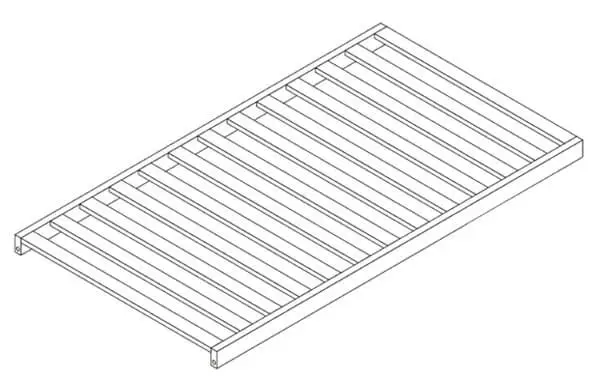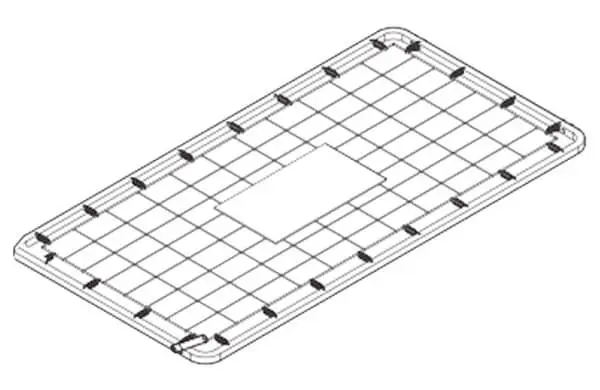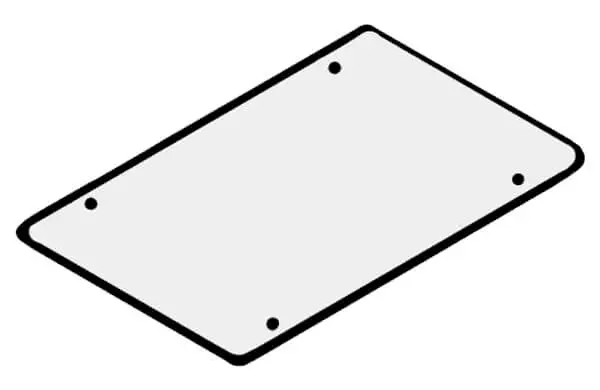
One of the key components you’ll receive with your crib is the mattress support. However, there are several types of mattress support. So, which one to choose? Are all of the same quality? Can you adjust their height?
These are only a few of the questions we receive regularly. Thus, I have decided to gather the most frequently asked questions about crib mattress support here.
I’ll cover the different types, their compatibility with crib sizes, weight capacities, and additional safety features.
I hope you find all the answers you need. However, if you think I have missed something, please share your thoughts in the comments below. We value your input and will happily answer you as soon as possible.
Now, let’s get started.
1. What types of crib mattress supports do we know?
There are several types of crib mattress supports, each with its own advantages and disadvantages. Here are the common types:
Wooden Slats:

Wooden slats are horizontal planks that run across the crib frame, providing support for the mattress. This type of mattress support is sturdy and durable. Empty spaces between slats allow good airflow, which helps prevent mold and mildew accumulation in the mattress.
Check if the slats are close enough; otherwise, the surface may become uneven.
Wooden supports are generally the least creaky. However, over time, some may start creaking or make noise when the baby moves.
Metal Frames:

Metal frames are a grid of crisscrossed wires that form a supportive base for the mattress. This mattress support is solid and durable, making it less likely to sag over time than wood.
Metal spring support generally withstand the wear the most. However, if poorly made, it can cause the mattress to wear out more quickly at contact points.
Solid Base:

This is a solid piece of wood or other material that supports the mattress. It is the worst choice because it does not have holes for air circulation.
Poor airflow through the crib mattress contributes to mold or mildew growth in the crib mattress and may cause your baby to overheat.
This mattress support is also heavier and more challenging to move or adjust.
2. Can I adjust the mattress support to different heights as my baby grows?
Yes and no. Some cribs, generally portable models, do not have adjustable mattress support. However, most of the cribs do have it.
These cribs are thoughtfully designed so that you can set the mattress at different heights to accommodate your baby’s growing needs. Typically, there are at least three height settings: high, medium, and low.
3. How does adjustable mattress support work?
The crib has adjustable mattress support for your convenience. You can start with the highest setting and gradually lower the mattress as your baby grows.
- Top Position: This position is used for newborns and young infants who cannot sit up or pull themselves up. It makes it easier for parents to place the baby in the crib and pick them up without bending too much.
- Medium Position: This position is used when the baby can sit up but cannot stand yet. You can still place and pick your baby in the crib without bending too much, while the middle setting prevents the baby from climbing out of the crib.
- Low Position: When your baby starts to stand, it’s time to set the mattress support to the lowest position. This setting keeps the mattress as low as possible, ensuring your baby’s safety by preventing them from climbing out of the crib.
4. How easy is it to change the height of the mattress support?
The ease of changing the mattress height depends on the crib’s design and construction. Here are some common mechanisms and their ease of use:
- Bolts and Screws: Requires unscrewing bolts or screws to adjust the mattress support. This method can be time-consuming and may require tools. It’s generally more secure but less convenient for frequent adjustments.
- Spring Clips: Uses spring-loaded clips that hold the mattress support in place. These are relatively easy to adjust and often do not require tools. You have to compress the clips and move the mattress support to the desired height. However, you must check the clips regularly to ensure they are secure.
- Adjustable Metal Frames: The mattress support is attached to a metal frame that you can adjust by moving it to different slots or notches on the crib frame. This method can be moderately easy, often requiring no tools or just a simple adjustment process.
- Drop-in Panels: The crib features panels that can be moved to different height settings. These are usually the easiest to adjust, often requiring no tools. The panels simply drop into place at the desired height.
Here are also a few general rules that I want you to stick to when making any adjustments:
Refer to the crib’s manual for specific height adjustment instructions. Make adjustments during the day when the baby is not in the crib to ensure you have ample time and light to work safely. Always ensure the crib is stable and secure after making adjustments. Periodically check the mattress support to ensure it remains secure, especially after an adjustment.
5. Does a specific mattress support fit only a particular crib or all of them?
The government regulates the interior dimensions of full-size cribs, making you think all standard-size mattress supports fit all full-size cribs. However, the law allows a tolerance of ± 5/8 inches. This means there can be issues with fitting a third-party mattress support into your crib.
You will get a mattress support with the crib. Most supports are made specifically for the crib they come with, so I wouldn’t use anything else.
If you need a replacement, contact the crib’s manufacturer.
6. What is the maximum weight capacity of the mattress support?
The maximum weight capacity varies by design and manufacturer, but most crib mattress supports can handle up to 50-60 pounds. This capacity is generally sufficient to support both infants and toddlers.
7. Does the mattress support make any noise when the baby moves?
The noise level depends on the type of support. Metal frames and spring clips might make more noise compared to wooden slats or solid platforms. However, high-quality designs minimize noise through better construction and materials.
8. Is there a warranty on the mattress support?
There is a warranty for the whole crib that includes a mattress support malfunction. The warranty duration varies from brand to brand, but it typically ranges from 1 to 5 years. You have to check the warranty details provided by the manufacturer for specific terms and coverage.
9. Is a crib mattress support durable enough to withstand multiple children?
Is a crib mattress support durable enough for multiple children?
A well-constructed mattress support can last through multiple children. Its durability depends on its type, as well as the quality of the materials and workmanship.
Metal frames and solid platforms are generally more durable, while wooden slats may wear out faster.
10. Are there any additional safety features for extra security?
Some mattress supports include extra safety features, such as anti-slip mechanisms and reinforced corners. These are advertised as added security for your child.
Having them certainly doesn’t hurt. However, if you buy a new crib, you don’t have to decide on one crib over another solely because it says it has them.
First, your crib most likely has at least one of these features, except that this is not explicitly advertised. And second, any crib on the market undergoes rigorous testing to ensure it is safe for your baby. Tests also include checking the quality and strength of the mattress support.
11. Has the mattress support been tested for safety and compliance with current regulations?
Yes! The crib mattress support must meet current safety standards and regulations. Look for certifications such as JPMA (Juvenile Products Manufacturers Association) or compliance with CPSC (Consumer Product Safety Commission) guidelines. These certifications indicate that the mattress support has undergone rigorous safety testing.
12. Can a crib mattress support sag or collapse?
Yes, crib mattress supports can sag or collapse over time for a few reasons. One common issue is wear and tear on the materials, like wood slats or metal springs, which can weaken and cause sagging.
Another reason is the crib assembly. If the crib isn’t assembled correctly, it might not be secure and could collapse.
Lastly, exceeding the prescribed maximum weight of the crib can also cause the support to fail.
